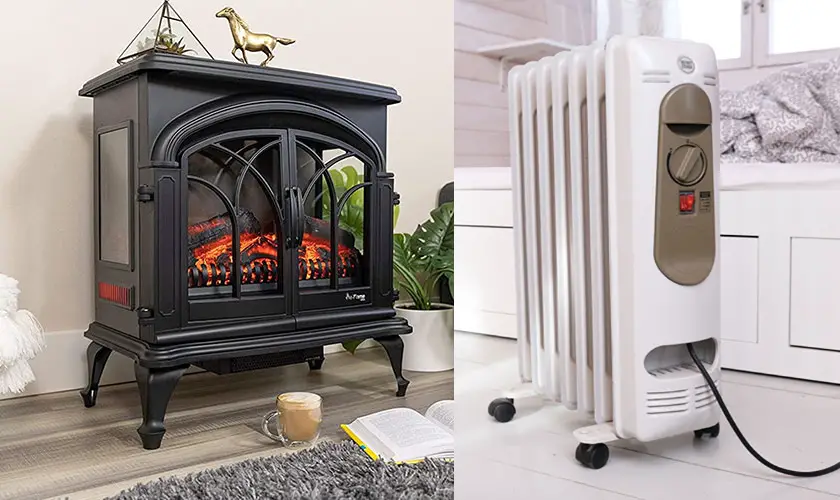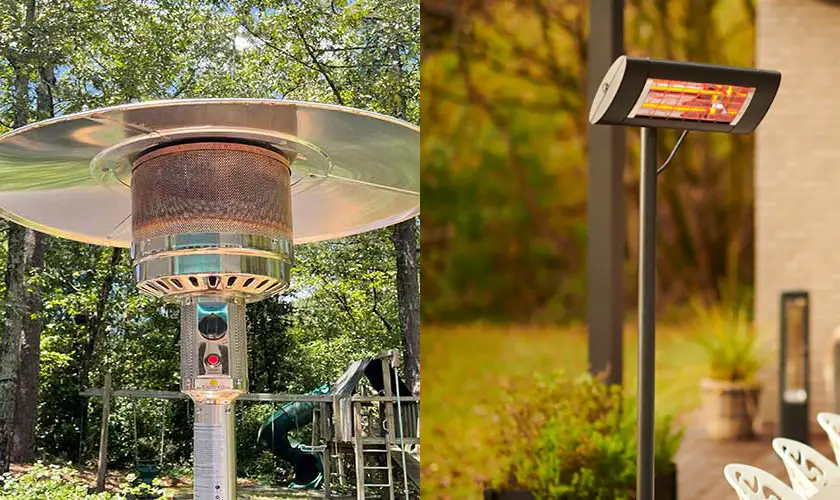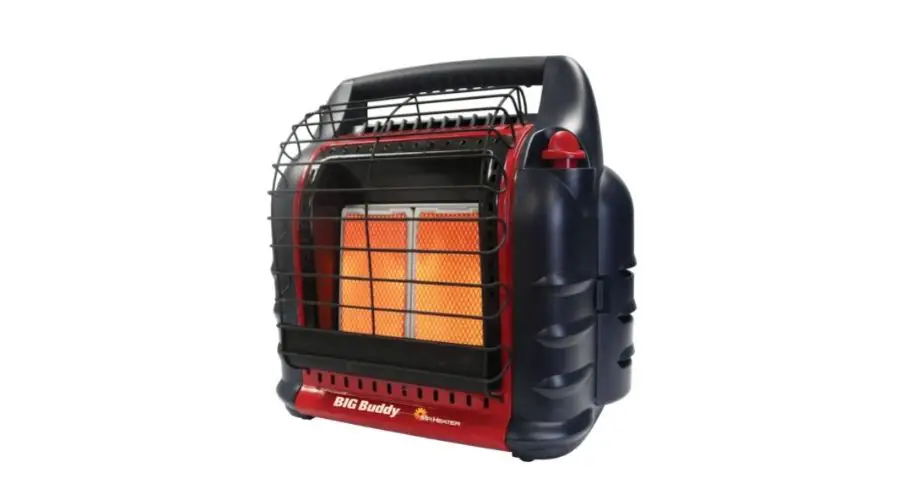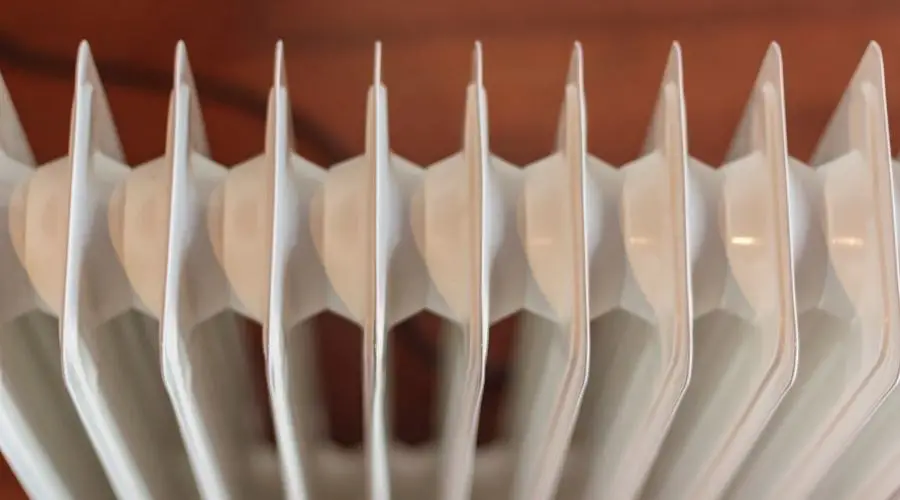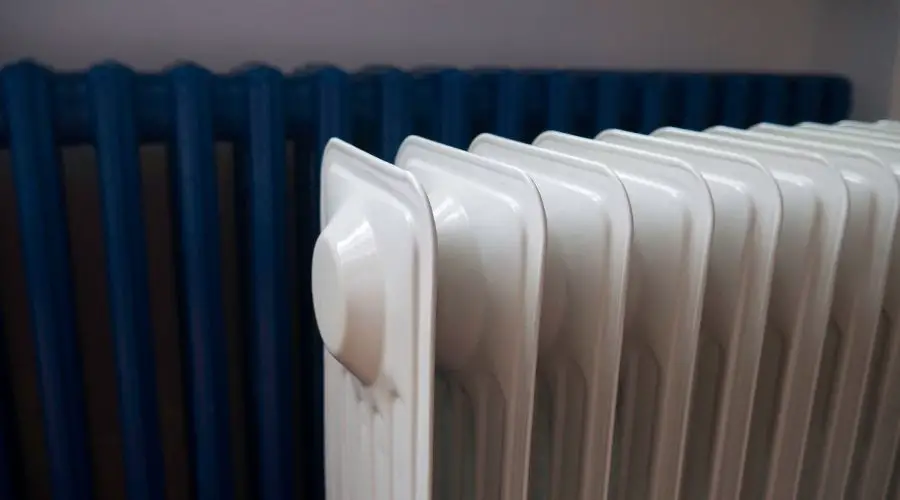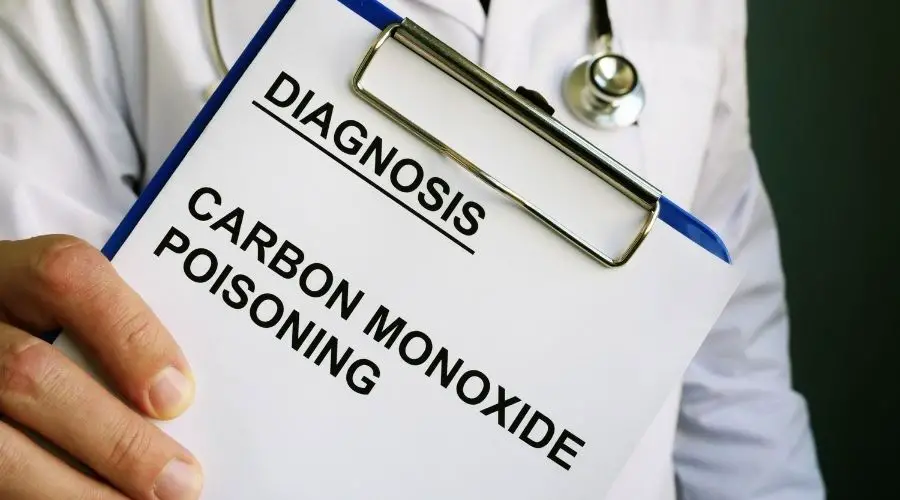
Carbon monoxide (CO) poisoning is the most frequent and probably the most dangerous gas that can sneak into your home. When we say the most threatening, we don’t mean that CO is the deadliest poison, but its properties make it dangerous.
Carbon monoxide is colorless, odorless, and can arise from burning fossil fuels. That includes gas, kerosene, and even wood. With that said, can you also get carbon monoxide poisoning from an electric heater?
Electric heaters pose no threat to emitting carbon monoxide, so there is no chance of you ever getting it from an electric heater as they don’t burn fuels, the process which makes CO doesn’t happen. Gas heaters, especially portable ones, are most likely to leak CO when malfunctioning.
Did you know that carbon monoxide poisoning causes over 400 deaths annually in the US? That makes it the leading cause of death by poisoning. It is silent yet deadly, so you should do whatever you can to keep yourself safe.
The best way to do that is to learn how electric and gas heaters work and what steps we should take to prevent accidents. Although electric heaters don’t pose a threat to CO poisoning, there are other safety hazards you need to be aware of.
How Do Electric Heaters Work?
There are various electric heaters, each using a different method to do the same thing – convert electric energy into heat. It does this by heating air or an electrical resistor – any electric heater’s heating element.
What is unique about electric heaters is that they are all 100% efficient in energy consumption. All their electricity converts into heat, and nothing gets “lost” in the process.
With gas or other fossil-fuel heaters, energy generates in the burning process: kerosene, oil, gas, or wood. Therefore, they present a safety hazard of fires and deadly gas such as carbon monoxide produced in the process (of course, only if it malfunctions).
Due to the burning process, some energy gets wasted on leaks, pipelines, and exhaust. So, even though gas is generally cheaper than electricity, it’s not as efficient for energy utilization.
As for the types of electric heaters, we can put most of them in one of the following categories: fan heaters, halogen heaters, oil-filled radiators, and convector heaters.
We’ll get a bit deeper into the types to understand the differences in their compliant operating systems. That way, you’ll be able to determine which option would be the best option for you if you consider using electric heating in the future.
1. Fan Heaters
Fan heaters are probably the most common type of electric heater. They use the electricity to generate heat and disperse it quickly through the room using fans. Fan heaters are a fantastic choice for a quick warmup, especially in smaller spaces.
The best thing about fan heaters is that they are usually very compact and lightweight, making them easily portable from room to room.
You don’t need to spend much money heating the entire house. You can heat only the rooms where you’re spending your time and carry the heater wherever you need it.
There are a few drawbacks to fan heaters. First of all, the fan noise is always an issue. Even the most silent ones have a slight hum that might bother some people.
Also, the effect of fan heating is quick but not very long-lasting, especially if the heating space is ample. These heaters work best in shorter periods and specific rooms.
2. Halogen Heaters
You could argue that these heaters are a mix of gas and electric heaters, but that wouldn’t entirely be correct. Halogen heaters can be seen in bars or lounges with heated terraces, glowing red bars or strings. Each of the bars has halogen gas that heats quickly when electricity influences.
The heat is radiant and doesn’t necessarily heat the air surrounding it, but other objects – walls, clothes, or your skin.
That’s why they feel so warm and cozy when you sit close to them. The halogen heats quickly and well and is amongst the cheapest electric heaters to run.
But you guessed it; this type of heater also has certain drawbacks. When it comes to safety, these are the ones that cause the most accidents.
Ensure not to leave them unattended or turned on while asleep. Also, be careful if you have small children or pets because the surface can be scorching.
3. Oil-filled Radiators
This heater is great when you need the heat to last longer. Unlike gas heaters that burn the fuel, these electric radiators heat the oil inside them, emitting warmth into the living space.
A great thing about oil-filled radiators is the long-lasting heating. Due to the oil holding temperature very well, the heater will continue to be warm long after you turn it off.
Being hot for longer is a real plus for several reasons.
- First, you can easily regulate the temperature of the room. When you heat the room to the desired degree and turn off the heater, it will still emit heat for some time.
Because of this, it keeps the room temperature where you want it to be, unlike other types of heaters that heat the room quickly but cool off too rapidly and can’t maintain the warmth for a longer time. - Second, you can turn it off but still get heating from it for some time. In doing so, it is a great way to save money on energy bills.
You have to regulate how you use it, and then you can lower expenses drastically. However, the system they use – metal filled with oil – is usually more robust and heavy, so transporting them from room to room can drag.
4. Convector Heaters
Finally, convector heaters are for those who spend much time at home and like the temperature to be right where they want it to be.
Convectors can be stand-alone or mounted and work a bit differently from the others. They emit heat to warm up the air that’s right around them.
As the air gets warmer, it gets lighter, rising, and colder air takes its place. The process continues until the space is heated evenly and to the degree you want it to be. It does take some more time to do the job, but the coziness you get as a result is unmatched by other heaters.
Because convection heaters take longer to heat means consuming more energy. If you’re looking to save money, this might not be the best option. But, if you want even and long-lasting heating, this is the way.
Why is Carbon Monoxide Dangerous?
To answer that question correctly, you must know what carbon monoxide is and how it forms. The danger of CO poisoning comes not only from its damage but also from the properties that make it extremely difficult to detect before it’s too late.
What is CO?
Carbon monoxide (CO) is a gas that causes more poisoning accidents in the US than any other poison. The formation of CO is the result of burning fossil fuels or materials that contain carbon.
When the burning is complete, it creates CO2 or carbon dioxide, non-toxic gas that is very common and natural to humans. However, when the burning is incomplete, and some other factors come into play, CO2 becomes CO.
Why CO is Dangerous & Examples
It is so dangerous because it has no smell, taste, or color. The only way to detect it is by using a unique measuring tool or recognizing the poisoning symptoms (when it is often already too late). Another thing that makes CO poisoning so dangerous and frequent is our way of life.
Fossil fuels are used all around us in everyday life. We use natural gas for heating or cooking, gasoline to run our vehicles, coal, wood for barbecue, and many other things.
- Example 1: If you are using a gas furnace, and it malfunctions, there is a chance that it will release carbon monoxide into your living space. The problem is, you probably wouldn’t know because there are no indicators.
- Example 2: People exposed to the biggest CO poisoning threats work in professions that use fossil fuel in everyday practice. Mechanics are among the most frequent victims in cases when the garage has no proper ventilation.
- Example 3: Also, welders, firefighters, and even car drivers are at risk. Internal combustion engines used in almost all vehicles are prone to malfunctioning and emitting carbon monoxide, so you should be careful and never ignore the “check engine” light.
That is also why you should always ventilate your living space if you’re heating on gas or wood. Always ensure your exhaust system is functioning, be it pipes or a chimney.
Never leave them unsupervised or turned on while you’re asleep, too, because that will prevent you from detecting that you’re poisoned. You won’t feel any symptoms in your sleep.
The Symptoms & Consequences of CO Poisoning
Carbon monoxide gets into your system by breathing. It then enters the blood system and disperses through the entire body very quickly.
The CO molecules are not as stable as carbon dioxide (CO2). In that case, the molecules will replace the missing oxygen atom with the atoms in your blood.
Ultimately that deprives your vital organs of the oxygen they usually receive with blood circulation, shutting them down.
The process can be quick or slow depending on the amount of carbon monoxide. If the amount of CO is substantial, it can get you to pass out in only a few minutes and ultimately suffocate from the lack of oxygen in your blood.
As we mentioned, there is no smell or color, so many people get CO poisoning without ever being aware of it. So, it is essential to recognize the symptoms as soon as possible to give yourself the best chance of escaping and surviving.
Some indicators that you might have CO poisoning are;
- Chest pains and tightness
- Sudden headache
- Dizziness
- Weakness
- All of a sudden feeling very sleepy
If the amount of carbon monoxide isn’t large enough to knock you out, but if the exposure continues for a longer time, all the symptoms will worsen.
You can feel very nauseous and even vomit. Eventually, it leads to unconsciousness and suffocation if not moved from the intoxicated area in time.
But, believe it or not, there is more. Even if you manage to get out in time, breathe, and get the proper treatment, the poisoning can permanently damage tissue that generally requires the most significant amounts of oxygen—namely, your heart and brain.
Preventative Measures to Take
Also, it can cause reproductive malfunctions and loss of potency. That said, you should do whatever you can to prevent the poisoning.
- First, keep your home or work area well ventilated, have a proper exhaust system for the fumes, heat, work in a garage, etc.
- Clean the burning source frequently; be it a heater, a fireplace, a gas stove, or anything else. Ensure it runs properly, and don’t take shortcuts when repairing them.
- If you find yourself trying to save somebody from CO poisoning, it would be best to call for professional help. If the situation is too critical and there is no time to wait, be very careful and try not to breathe when entering the intoxicated area. Many CO poisoning victims tried to save others but didn’t know the proper measures to take beforehand.
Do Electric Heaters Produce Carbon Monoxide?
If you are currently heating your home with an electric heater, we have some good news: your electric heater does not and cannot produce carbon monoxide.
However, if you are using gas or wood, there is a real risk of CO poisoning, so you should take all the precautionary measures to ensure it won’t happen.
Although there are other hazards you should be aware of with electric heaters, such as short circuits or overheats, there is no physical chance of them creating carbon monoxide. As we have explained earlier, CO is a product of the incomplete burning of materials consisting of carbon.
Electric heaters don’t use carbon material, nor do they burn them. Instead, they use electricity, so no physical or chemical reaction can cause carbon monoxide to form.
A side note – we aren’t claiming that all gas or wood-burning heaters produce carbon monoxide. If they work correctly, they have CO2 as a natural result of burning.
CO can develop only in case of malfunction and a change in the chemical reaction of burning. That’s why it’s essential to keep the devices clean and functional.
To conclude, if you use an electric heater, there is no chance of CO poisoning. CO production is possible if you use any heater or device that burns carbon material.
Safety Measures to be Taken for Heaters that Burn CO
The safety measures we should remember are the same for all carbon material-burning devices. That includes heaters, stoves, engines, forges, etc.
- First and foremost, your ventilation system has to be clean and running at all times. Almost half of the accidents with carbon monoxide come as a result of poor ventilation.
Example: Clogged chimneys and leaky exhaust pipes can cause the one thing they are designed to do – keeping the toxic fumes and gases away and leading them out of your living space.
- Also, don’t mount or repair the devices yourself if you are not trained and skilled. It is better to pay a few extra bucks for a professional gasfitter and ensure everything is done correctly than to try doing it yourself and end up causing a catastrophe.
- The same goes for servicing those devices. Hire a professional to clean and service them at least once a year, preferably right before winter, when you’ll use them the most.
Even if everything seems in order, do it nevertheless because it only takes a moment for a malfunction and a disaster to happen.
- One crucial piece of advice is never to run a vehicle indoors. For instance, if your car is in the garage and you wish to warm it up before driving, take it outside and proceed.
Internal combustion engines are a significant CO emission hazard, so running a vehicle inside your garage is dangerous.
- Finally, if you want to be completely safe, you should install CO alarms close to the burning source in your home. Some states require CO alarms to be installed by law under challenging environments such as car shops, but you can easily install them in your home. Once they are on, test them frequently and change batteries regularly to ensure they are working correctly.
Final Thoughts
Electric heaters do not produce carbon monoxide, so you purchase your space heater with this knowledge. Always take any necessary safety precautions, especially if you have anything that burns with gas in your home. We here at Heaterspace are here to help with any heater information you may need!


